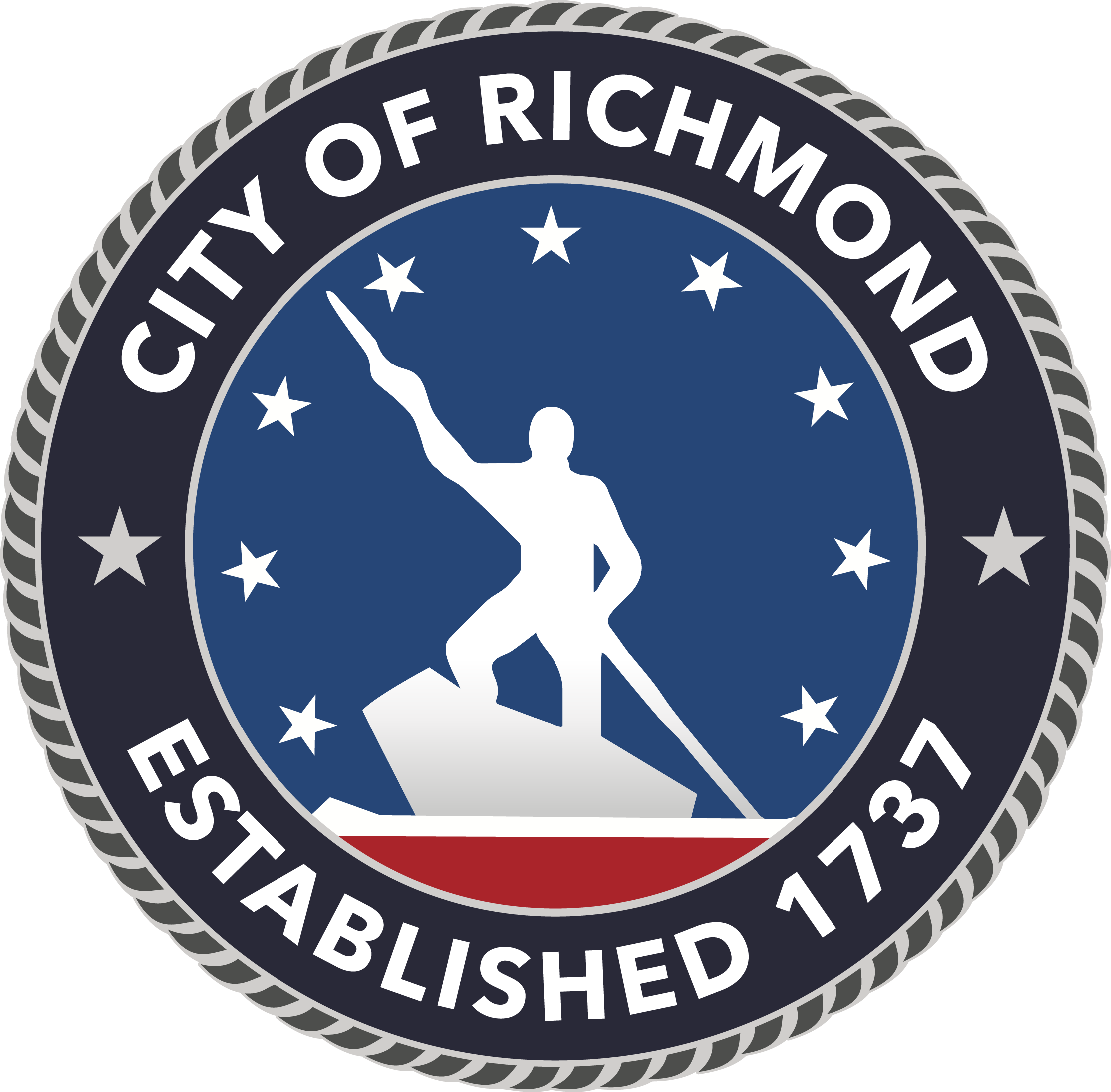The City of Richmond is joining a growing nationwide effort to foster economic security among working families.
Today, Mayor Stoney announced that the city, in partnership with Robins Foundation, has launched the Richmond Resilience Initiative (RRI), a guaranteed income pilot program. Under the program, 18 working families who no longer qualify for benefits assistance but still do not make a living wage will receive $500 a month for 24 months.
The program is part of a larger national movement to foster economic security in a data-driven, research-tested capacity, and is modeled after successful pilots in cities like Stockton, California. Mayor Stoney recently joined Mayors for Guaranteed Income, a coalition of more than 25 mayors committed to piloting universal income programs to promote economic empowerment.
“The Richmond Resilience Initiative pilot will go far in both supporting hardworking families and providing the necessary data points to design policies that promote sustainable economic security and mobility,” said the mayor.
“The pandemic has proven that for many families, $500 can be the difference between staying sheltered or losing your home, buying groceries or going hungry, and that degree of vulnerability is unacceptable.”
Even before the pandemic, the Federal Reserve found that 40% of American families cannot afford a $400 emergency. As a result of the pandemic, even more families are at risk of financial insecurity.
Guaranteed income payments are meant to supplement the existing safety net – a portfolio of risk-reducing measures designed to protect families from losing financial security or derailing long-term financial goals because of enduring poverty or an unexpected event like a global pandemic, severe recession, or personal tragedy.
Research shows that when families receive supplemental assistance, they prioritize spending on what they need most to help ease their already burdened household, like rent, groceries, transportation, and childcare. Further, existing research on direct cash assistance shows positive impacts on health and education outcomes, and negligible effects on the labor market.
“More than just a pilot program, this plan is a first step toward state and national policy that will help qualified, working families in need to close the gap between the social safety net and sustainable employment,” said the mayor.
The pilot begins by supporting these 18 families, but the effects could be expansive. Supplemental assistance has a demonstrated multiplier effect, especially when investments are made in women, who traditionally serve the community as caregivers and resource-sharers.
Funding and partners:
Funding for the program is made possible by Robins Foundation and federal CARES Act dollars. This pilot program joins eviction diversion, rent relief, and the Family Crisis Fund, launched in April 2020 by Robins Foundation in partnership with the city, as another crucial element of the city’s pandemic response. More than 2,600 families throughout the region were supported by one-time cash assistance through the Family Crisis Fund.
Program research, implementation and evaluation partners include the Federal Reserve Banks of Atlanta and Richmond, Mayors for Guaranteed Income (MGI), Family Independence Initiative, and the Center for Guaranteed Income Research at the University of Pennsylvania School of Social Policy & Practice.
Participant selection:
The pilot cohort is comprised of clientele of the Office of Community Wealth Building (OCWB), the workforce development and economic mobility agency created at the recommendation of the 2011 Richmond Anti-poverty Commission. Participants were randomly selected from a group of OCWB clients that have children, are employed and continue working hard to advance their careers but have lost all public benefits despite not yet earning a living wage.
Overwhelmingly, these heads of household no longer qualify for government support because of a phenomenon referred to as the “cliff effect,” when working individuals make too much money to qualify for benefits but not enough to support their family and attain sustainable economic mobility, falling into a chasm of economic vulnerability.
Says OCWB Director Valaryee Mitchell, “The cliff effect not only disincentivizes economic empowerment, but it cements the intergenerational symptoms of poverty. Supplemental assistance helps these families stay resilient on their path to economic security.”
Statements from key partners:
Robins Foundation
“This program is a fresh approach to addressing a complex problem, and it reflects our commitment to advance the greater Richmond Community and work to create an environment in which everyone has an opportunity to thrive.
“Poverty and positive community outcomes like education achievement are interconnected, so to improve education opportunities, we must break the cycles of intergenerational poverty vexing our region. Challenges like that cannot be addressed with programmatic support alone. With partnerships like this one and the potential expansive impact of this initiative, we can go beyond providing programmatic support to updating state and national policy that will help the families in our community achieve the results they need.
“We encourage our peers to join us in exploring this transformational response. By leveraging the best of what our partners and peers can contribute to supporting and expanding this program, we predict the implications of its impact could be significant.”
Mayors for Guaranteed Income
“It is no surprise that Mayor Stoney brings such forward-thinking leadership to a challenge he’s identified in his community. Guaranteed income is the most direct way to address gaps left by conditional benefits systems, and the design of this program demonstrates how well he knows and serves his constituents who would otherwise be slipping through the cracks of an insufficient social safety net,” said Mayor of Stockton and founder of Mayors for a Guaranteed Income, Michael Tubbs.
"No matter the state of the nation, mayors are uniquely suited to meet the moment and help our friends and neighbors who are struggling with real action. As we’ve seen in Stockton, we know that guaranteed income can make all the difference for individuals who are not treated with dignity by an economy that isn’t built to work for everyone. The Richmond program and the pilots that follow will surely reinforce the impact we know an income floor can have for people’s overall well-being and quality of life."
Federal Reserve Bank of Atlanta (Atlanta Fed)
“The Atlanta Fed is pleased to partner with the City of Richmond and Robins Foundation on the Richmond Guaranteed Income Pilot. The Atlanta Fed, in collaboration with the Richmond Fed, will use its Career Ladder Identifier and Financial Forecaster (CLIFF) to evaluate how the guaranteed income pilot interacts with the social safety net, reduces barriers to career investment, and supports families on their career path to economic security.
“The Atlanta Fed partners with organizations to conduct research on benefits cliffs and develop tools to support community and state efforts to improve economic security for families. As part of this effort, the Atlanta Fed developed CLIFF. CLIFF is an analytic tool designed to aid workforce and human services professionals, employers, nonprofits and policymakers working to mitigate benefits cliffs and support families through changes in practice, policy, systems and alignment.”
Federal Reserve Bank of Richmond (Richmond Fed)
“The Richmond Fed seeks to provide resources to partners in our District, through our community development outreach and our research, that address barriers to economic mobility, one of which is CLIFF, developed by the Atlanta Fed. The Richmond Fed looks forward to supporting our partners’ use of these tools as we seek to better understand barriers to economic mobility and career advancement in our District and how policies and practices like the Guaranteed Income Pilot might help address these issues.”
Family Independence Initiative
“After working with thousands of families for nearly 20 years, Family Independence Initiative (FII) is certain that people don’t live in poverty because they are lazy, uneducated or mismanage money as stereotypes would indicate,” said Kofi Kenyatta, director of policy and practice for Family Independence Initiative. “Our approach views low-income individuals and families from a position of strength, recognizing that they have the capacity and insight needed to make decisions for themselves. We are pleased to be in partnership with stakeholders from across the Richmond region to trust and invest in the people of Greater Richmond.”
Center for Guaranteed Income Research
“The Center for Guaranteed Income Research is the leading applied research institution that studies the impacts of guaranteed income and unconditional cash transfers across the US. We are pleased to partner with the City of Richmond, as they launch one of the first pilots affiliated with Mayors for a Guaranteed Income. In partnership with city leadership, we look forward to implementing rigorous mixed-methods research that will help the city and nation understand the impacts of guaranteed income on physical and mental health, financial security, housing stability, family dynamics and parenting, transportation access, and agency over one's future.”
##







